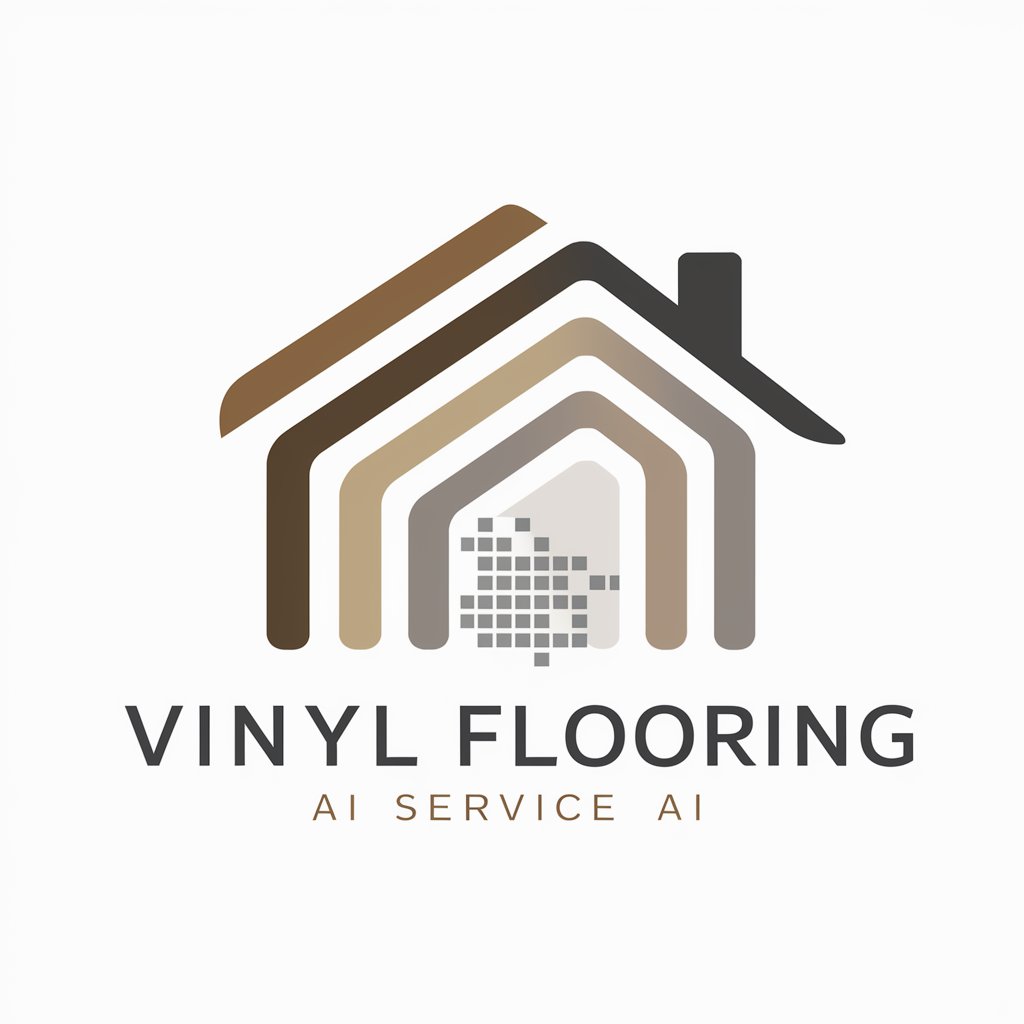Vinyl Flooring - Vinyl Flooring Guide

Welcome! How can I assist you with your vinyl flooring needs today?
Empowering Your Flooring Choices with AI
What are the different types of vinyl flooring available?
Can you explain the process of installing vinyl flooring?
What are the best maintenance tips for vinyl flooring?
How does vinyl flooring compare to other types of flooring in terms of durability and cost?
Get Embed Code
Introduction to Vinyl Flooring
Vinyl flooring is a versatile, durable, and cost-effective flooring solution designed to replicate the appearance of natural materials such as hardwood, stone, and ceramic tile, while offering enhanced performance characteristics. It is constructed from multiple layers, including a wear layer, a decorative layer, a core layer, and a backing layer, which collectively contribute to its durability, resistance to moisture, and comfort underfoot. Vinyl flooring is available in various formats, including sheets, tiles, and planks, each suited to different installation needs and aesthetic preferences. Examples of vinyl flooring applications include its use in residential settings for kitchens and bathrooms, where moisture resistance is crucial, and in commercial spaces like retail stores and offices, where durability and low maintenance are paramount. Powered by ChatGPT-4o。

Main Functions of Vinyl Flooring
Moisture Resistance
Example
Vinyl flooring is ideal for bathrooms, kitchens, and basements where the environment is prone to dampness.
Scenario
In a bathroom remodel, a homeowner chooses vinyl plank flooring because it can withstand the high humidity and occasional spills without warping or staining.
Durability
Example
High-traffic commercial spaces such as retail stores, hospitals, and schools often utilize vinyl flooring due to its ability to withstand heavy foot traffic.
Scenario
A school corridor, faced with hundreds of students moving through daily, installs vinyl tile flooring to ensure a long-lasting, easy-to-maintain surface.
Aesthetic Flexibility
Example
Homeowners looking for a cost-effective hardwood or stone flooring alternative without compromising on the look.
Scenario
A homeowner selects luxury vinyl plank flooring for their living room to achieve the warm, inviting look of real wood at a fraction of the cost and with easier maintenance.
Easy Installation
Example
DIY enthusiasts or professionals can easily install vinyl flooring, which is available in click-together, peel-and-stick, and glue-down options.
Scenario
A DIY enthusiast opts for click-together vinyl planks for a weekend project to update their kitchen floor without the need for professional tools or help.
Ideal Users of Vinyl Flooring Services
Homeowners
Homeowners benefit from vinyl flooring's cost-effectiveness, durability, and ease of maintenance, making it an excellent choice for upgrading the aesthetics and functionality of their living spaces, especially in areas prone to moisture or heavy use.
Commercial Property Owners
Owners of commercial properties, such as retail stores, offices, and rental units, value vinyl flooring for its resilience to high traffic, ease of cleaning, and broad range of designs that can complement any interior decor style.
DIY Enthusiasts
DIY enthusiasts appreciate vinyl flooring for its straightforward installation processes, which enable them to undertake flooring projects on their own, saving costs on labor while achieving a professional-looking finish.
Professionals in the Flooring Industry
Contractors and interior designers recommend vinyl flooring due to its versatility, wide range of options, and the ability to meet clients' needs for both functionality and style in residential and commercial projects.

How to Use Vinyl Flooring
Begin with a Free Trial
Start by visiting a platform that offers a no-login, free trial to understand the basics and potential of vinyl flooring for your space. This initial step requires no commitment and provides a comprehensive overview.
Choose Your Style
Select the type of vinyl flooring that best suits your needs—whether it be luxury vinyl planks, tiles, or sheet vinyl. Consider the room's use, your home's overall style, and your budget.
Measure Your Space
Accurately measure the area where you plan to install vinyl flooring. This will help in purchasing the correct amount of material and planning the layout for minimal waste and optimal appearance.
Prepare the Subfloor
Ensure the subfloor is clean, dry, and level. Any imperfections can affect the vinyl flooring's appearance and durability. For existing floors, remove any debris, and for concrete floors, check for moisture.
Install the Flooring
Follow the manufacturer's instructions for installation, which may vary by the type of vinyl flooring chosen. Consider hiring a professional for the best results, especially for complex spaces.
Try other advanced and practical GPTs
Shade Tree (Fix-It-Man) meaning?
Empowering your DIY and repair projects with AI

Wiki GTP
Empower your curiosity with AI-driven insights

Naked Checkers meaning?
Elevate Creativity with AI

Biology Research Assistant
Unraveling Biology with AI

Diogenes of Sinope Scholar
Exploring ancient wisdom through AI

Il Cibernetico GPT
Harnessing AI for specialized tasks

QFS Financial Insights Assistant
Empowering Financial Decisions with AI

Why Do I Have To Choose meaning?
Empowering Creativity with AI

Choice meaning?
Empowering decisions with AI insights.

Pick Up Your Phone meaning?
Clarify Messages with AI

Amazing Grace meaning?
Deepen Your Understanding with AI

AnimalizeMe
Discover Destinations Through Their Spirit Animals

Vinyl Flooring FAQ
What is the durability of vinyl flooring?
Vinyl flooring is known for its durability and resistance to wear and tear, making it suitable for high-traffic areas. Its lifespan can range from 5 to 20 years, depending on the quality and maintenance.
Can vinyl flooring be used in bathrooms?
Yes, vinyl flooring is an excellent choice for bathrooms due to its water-resistant properties. It can withstand moisture and spills, making it ideal for wet environments.
Is vinyl flooring eco-friendly?
Vinyl flooring varies in its environmental impact. Some products are made from recycled materials and are recyclable, but others may contain harmful chemicals. Look for certifications like FloorScore for lower emissions.
How do I clean and maintain vinyl flooring?
Vinyl flooring is low maintenance. Regular sweeping and occasional mopping with a mild cleaner are sufficient. Avoid abrasive cleaners and excessive water to preserve the floor's appearance and integrity.
Can I install vinyl flooring over existing tiles?
Yes, vinyl flooring can be installed over existing tiles, provided the tiles are even and in good condition. It's important to fill any grout lines to ensure a smooth installation surface.
